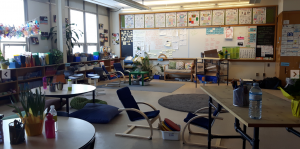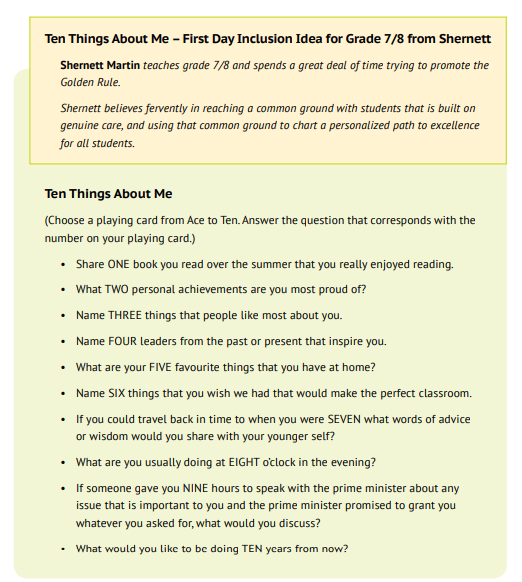When I first started teaching grade eight, by Fridays I often found that only a few of my students were handing things in. It was frustrating as many students by the end of the week couldn’t remember what was due or what they had or hadn’t completed. Some actually forgot and some just pretended…it was often hard to differentiate between the two. This year, I came up with a solution that is allowing all of my students to complete most, if not all of the assigned tasks for the week.
During the weekend I plan the lessons and assessments for the week ahead. It is often a continuation from the week before for subjects such as math, science, history, geography and literacy. When planning, I come up with the tasks that will be due by the end of the week. An example of the tasks for the week of January 20th to 24th were: a map for geography, five reading response questions for literacy, a rough copy of an essay, a science experiment outline and a math task. By Friday, all of these items were due. On Monday and Tuesdays, I teach the lessons and Wednesday and Thursday are used for further instructions and independent work/group work. At the beginning of the week, I write out on the board the four to six things that would be due by Friday. Students write these things out in a table like format on a large yellow sticky note with the subject on the left and the task on the right. Throughout the week, they check off each item that is due.
On Friday, I do not put any subjects on the schedule, I write the letters I.W. meaning independent work. Students work at their own pace to complete their checklists. Each task has been explained prior to Friday except for the math task. The math task is an extension of the math lessons from the week and they can ask for this math task at any time on the Friday. Throughout the day, they work on checking off items and completing their to do list for the week. This keeps students on top of their work and I often find students are excited when they get to check off an item. Then, by dismissal on Friday, all students hand in their sticky notes in a large blue organizer I have hanging on the chalkboard.
On the weekend, I mark their work as well as I view their sticky notes. Then I record their independent work mark for the week:
0 tasks complete- N
1-2 tasks complete- S
3-4 tasks complete- G
5+ tasks completed- E
Students that finish before the deadline of the end of the day Friday are given an extra tasks that will further their learning in one or more of the topics we covered during the week.
My students are very excited on Fridays because they follow their own set schedule. At first, I wondered if some students would just sit around and do nothing but that hasn’t ever been the case. My students that were slow to start tasks in September/October are often first to hand in their sticky notes. Fridays are my students favourite days because of the way they move at their own pace and they like the feeling of getting tasks completed and getting to checkmark something off their list.
I encourage teachers to try this handy sticky note idea as it helps students stay organized and hopefully, this organizational skill will help them set timelines in high school, college and/or university.
**For the week of January 20th to 24th, 16 out of my 25 students received an E for their sticky note checklists, completing all or more of their set tasks for the week.**

 Chapter 2 ends with classroom set-up. As many of you know, I was a passionate advocate of flexible seating in the classroom. Years ago, my students worked on a Math project where they re-designed our classroom while taking into consideration their learning needs. They measured the classroom and petitioned our Principal for some money for items they thought would better meet their learning needs. Some wanted standing tables while other wanted opportunities to sit on the floor. We created a learning environment that worked best for us and the autonomy and increased levels of ownership in the classroom were an indication that students felt as thought the classroom was their space. Now I know that we were lucky in that we were given some money to redesign but since leaving that school, I learned 2 important lessons: where possible, let students design the space so they feel that sense of ownership in the space and be intentional about what you chose to include in your classroom space. This picture of our space looks quite full and I would have to say that every item spoke to who we were as a group. On pages 25 to 30, I love that each of the classroom learning spaces are different and yet the amazing educators can speak to the differences that they have included in their classrooms with intentionality. I just started feeling a little nostalgic about designing learning spaces!
Chapter 2 ends with classroom set-up. As many of you know, I was a passionate advocate of flexible seating in the classroom. Years ago, my students worked on a Math project where they re-designed our classroom while taking into consideration their learning needs. They measured the classroom and petitioned our Principal for some money for items they thought would better meet their learning needs. Some wanted standing tables while other wanted opportunities to sit on the floor. We created a learning environment that worked best for us and the autonomy and increased levels of ownership in the classroom were an indication that students felt as thought the classroom was their space. Now I know that we were lucky in that we were given some money to redesign but since leaving that school, I learned 2 important lessons: where possible, let students design the space so they feel that sense of ownership in the space and be intentional about what you chose to include in your classroom space. This picture of our space looks quite full and I would have to say that every item spoke to who we were as a group. On pages 25 to 30, I love that each of the classroom learning spaces are different and yet the amazing educators can speak to the differences that they have included in their classrooms with intentionality. I just started feeling a little nostalgic about designing learning spaces! Ideas
Ideas